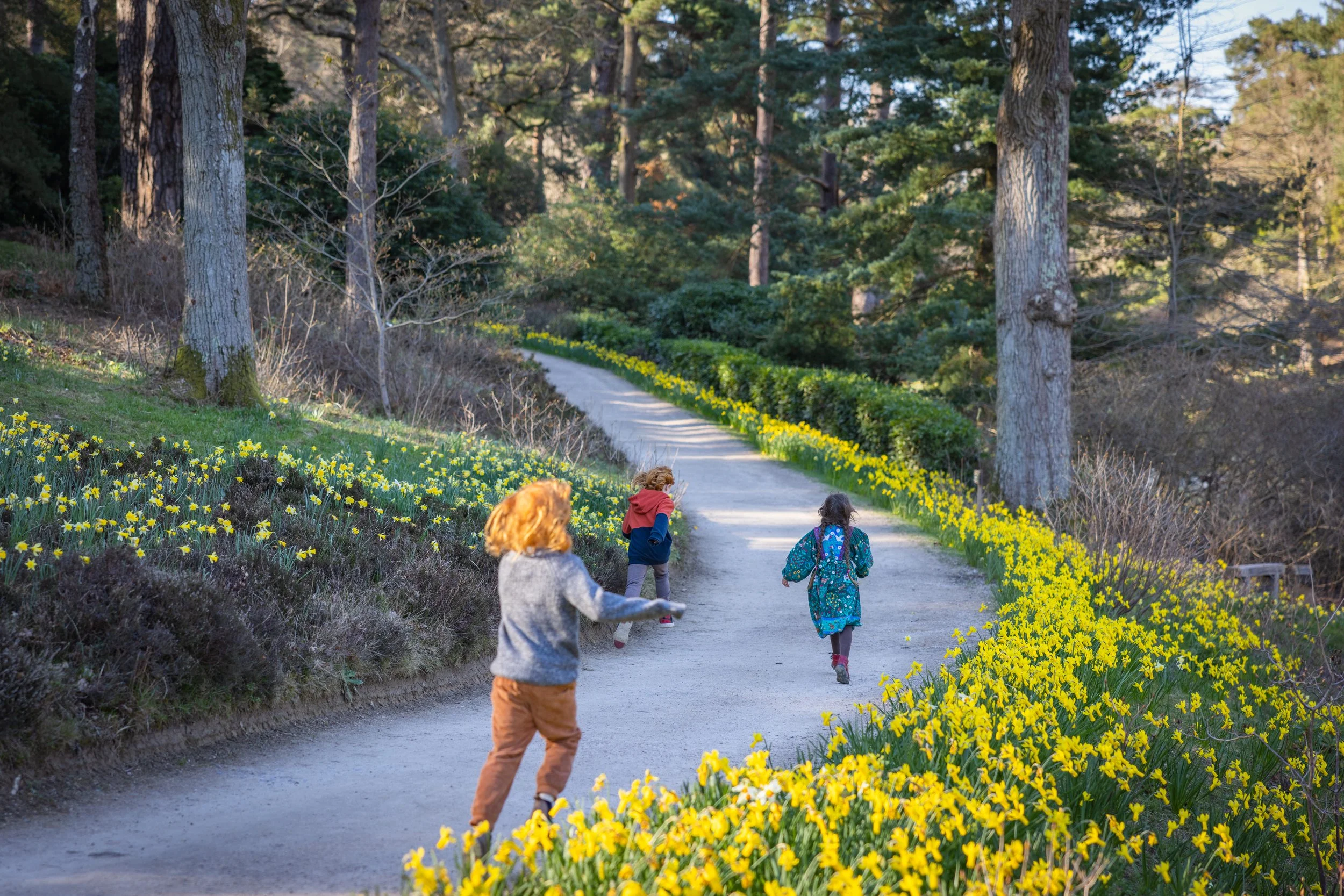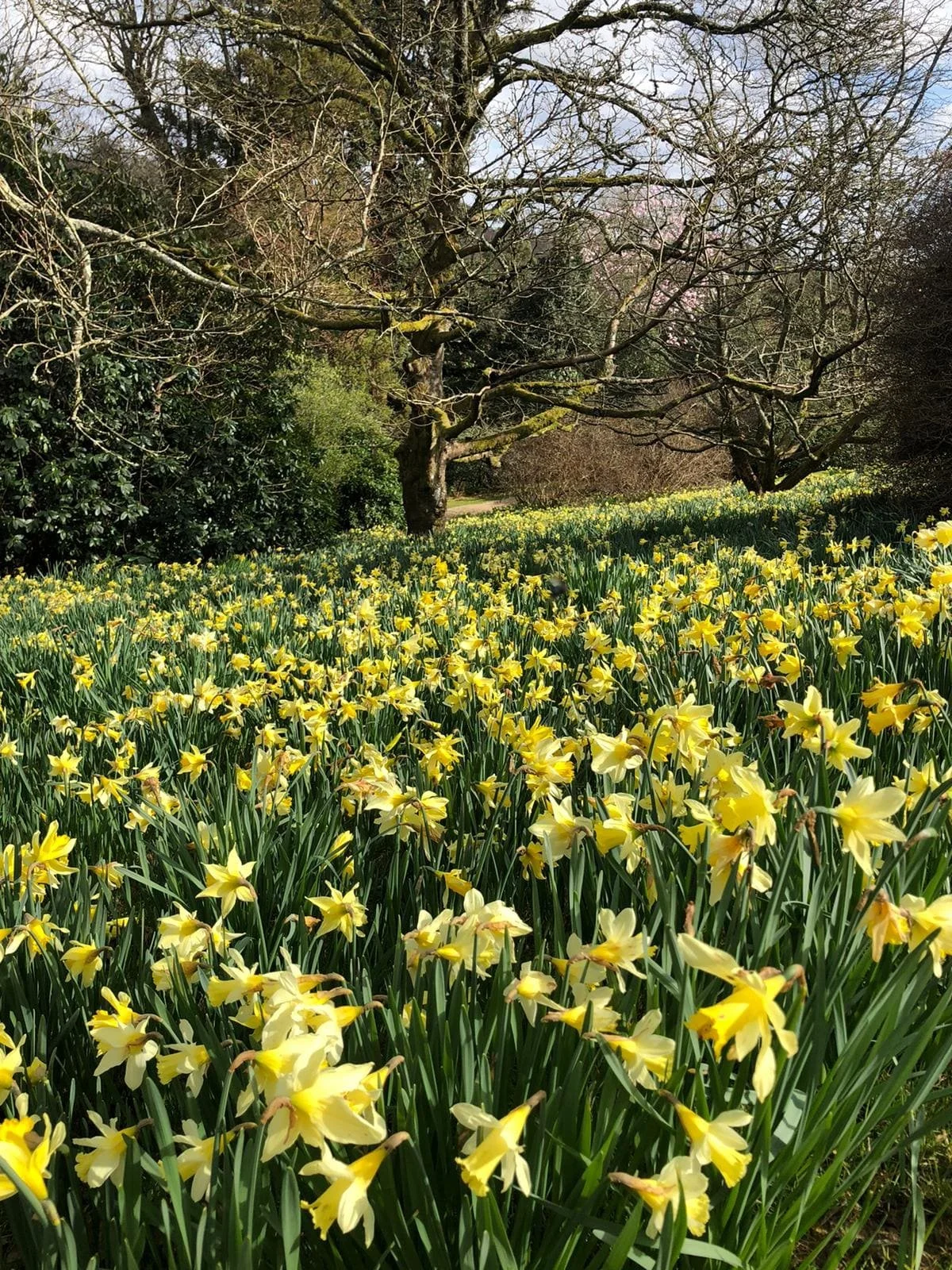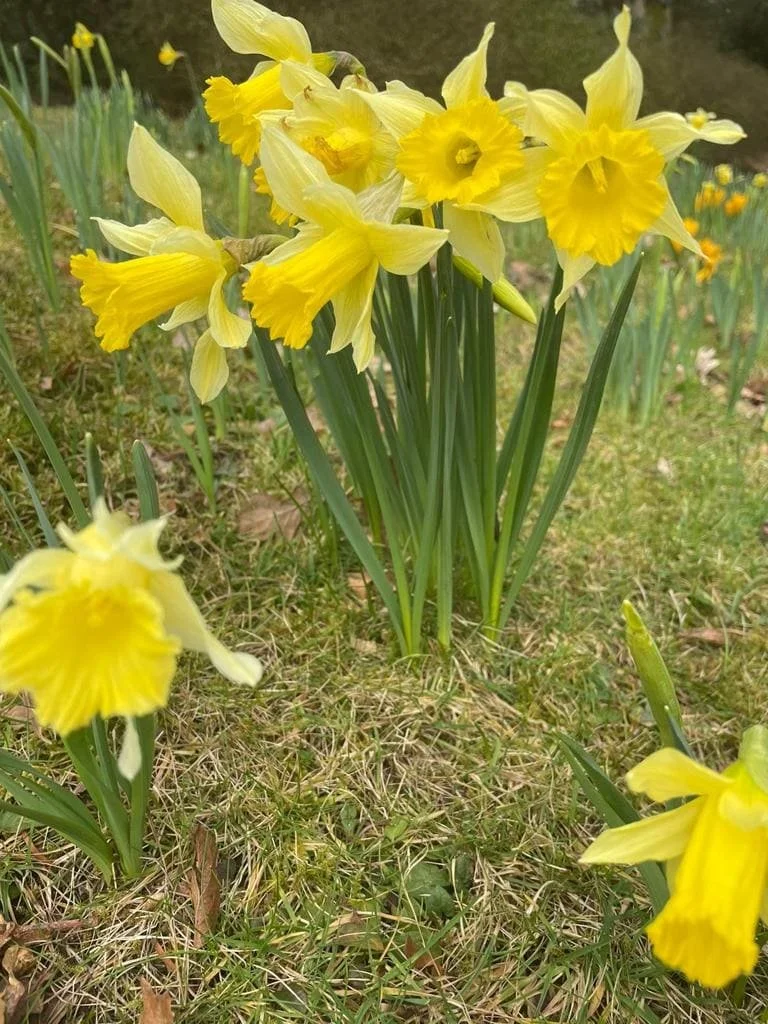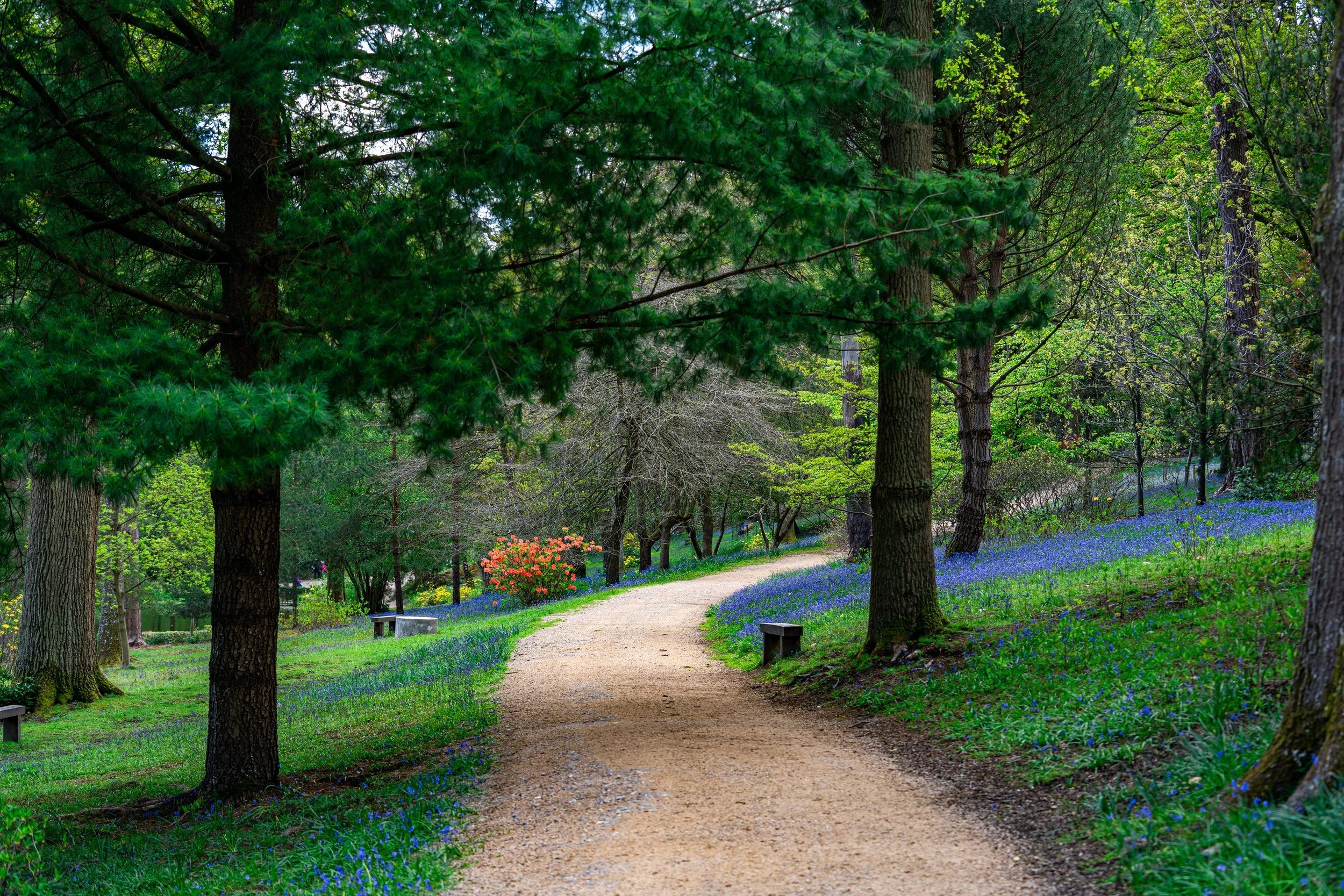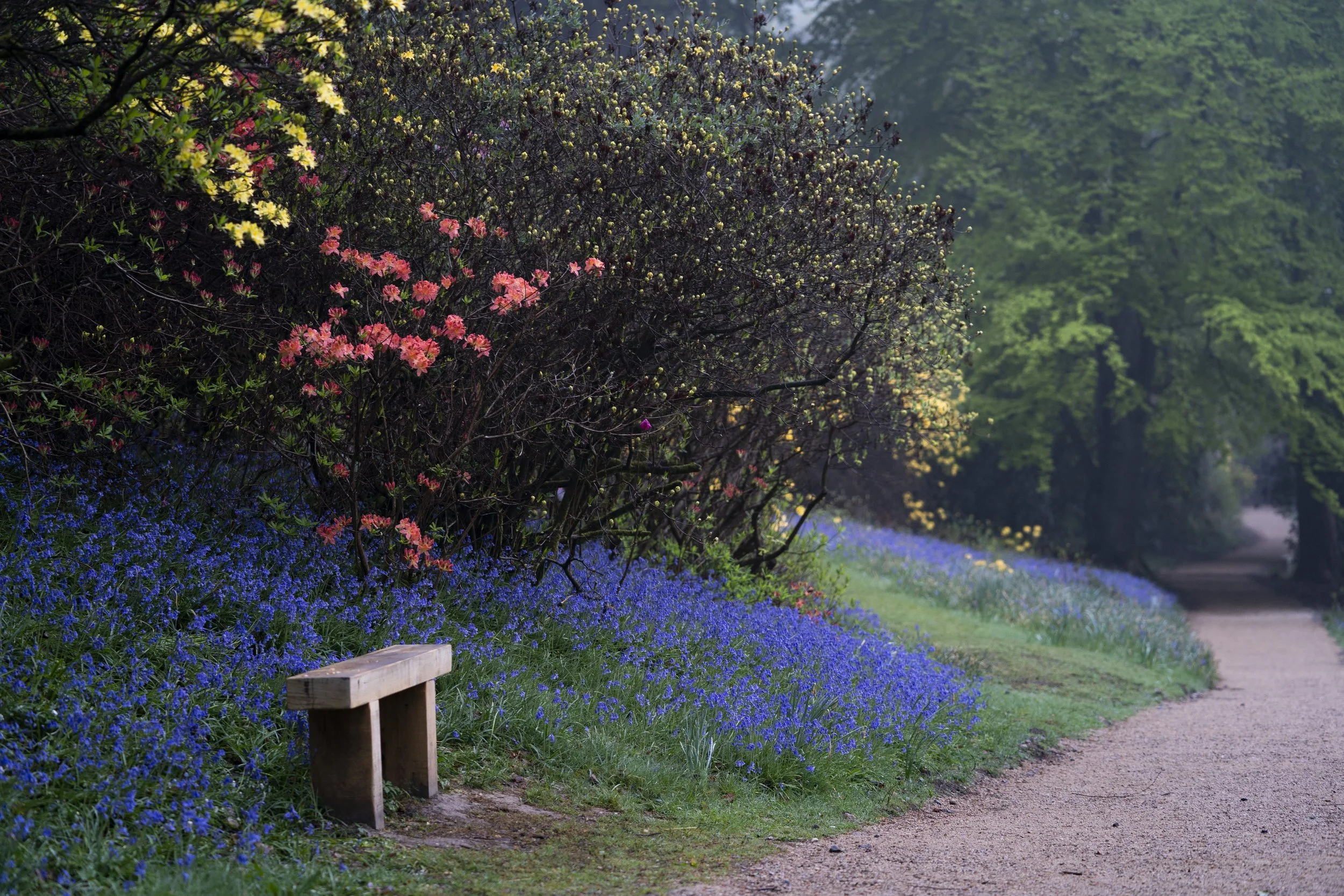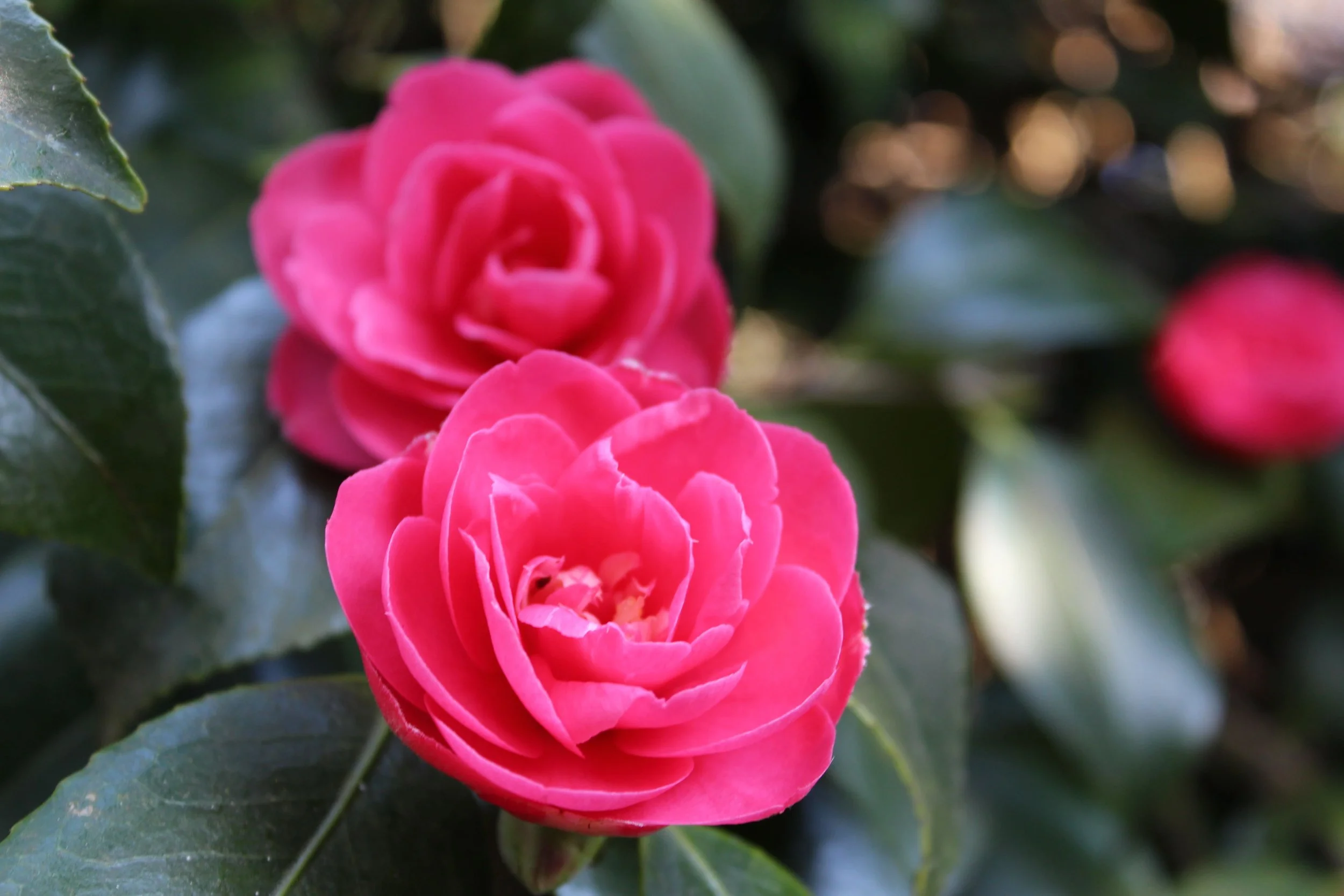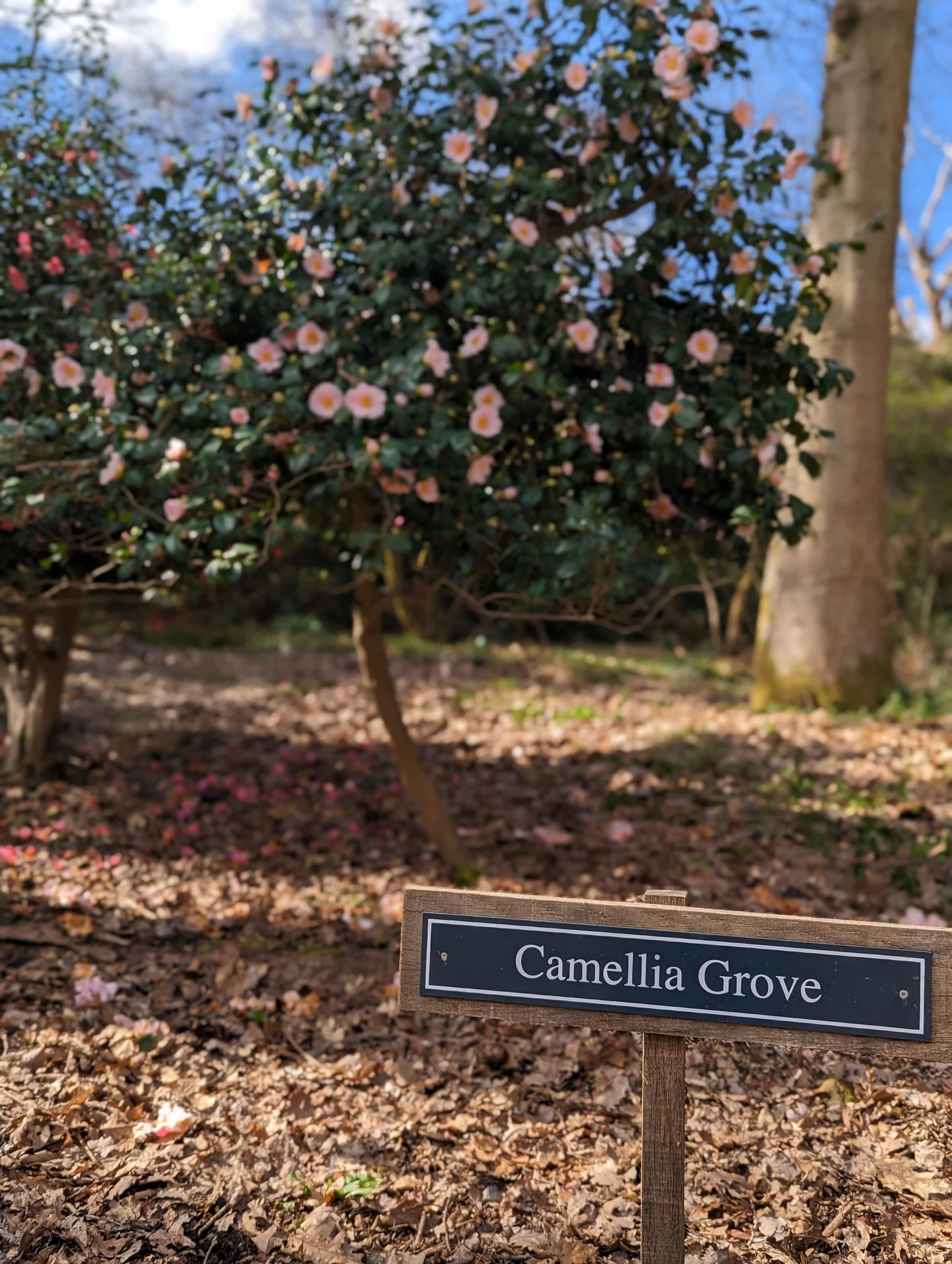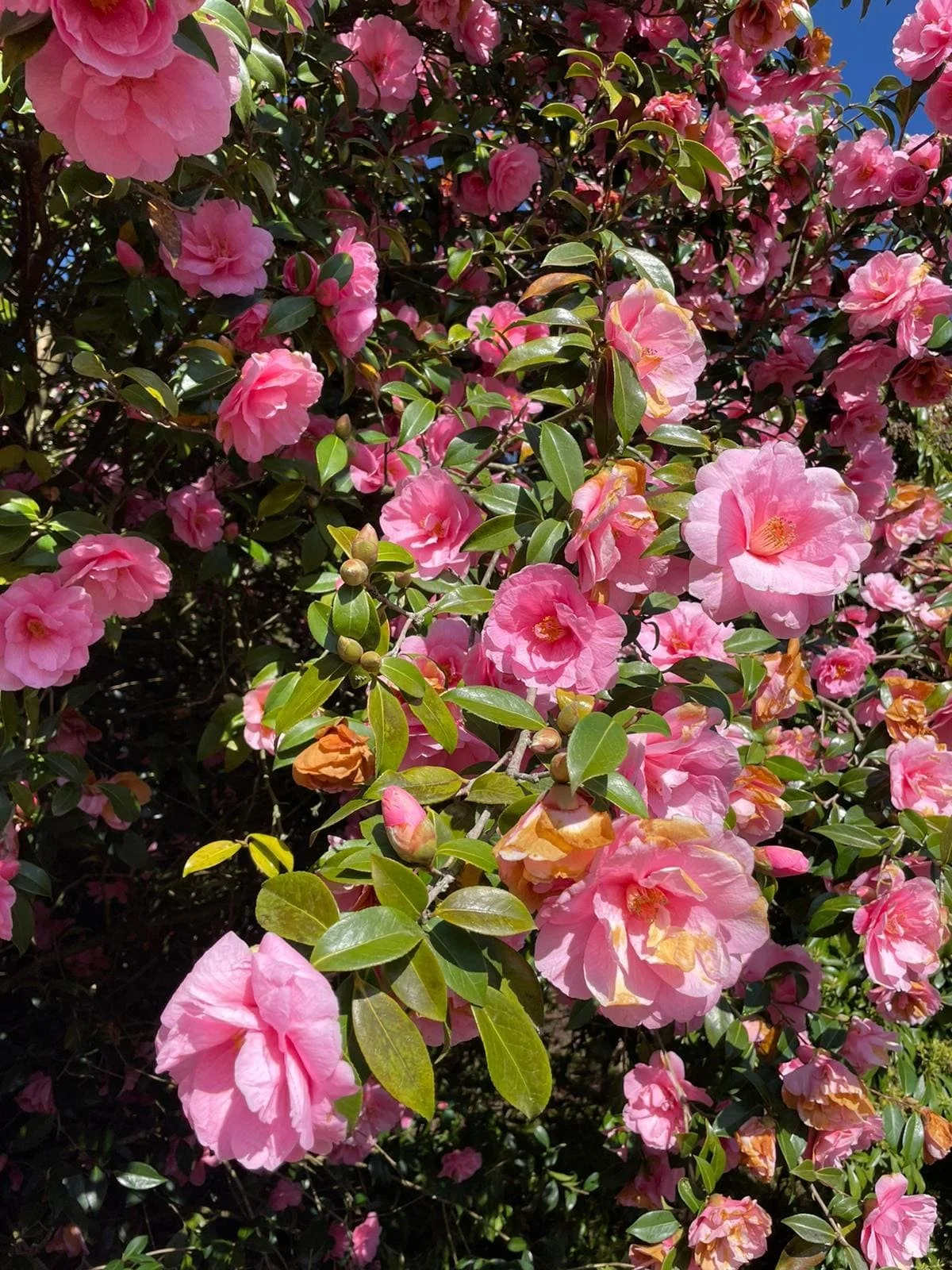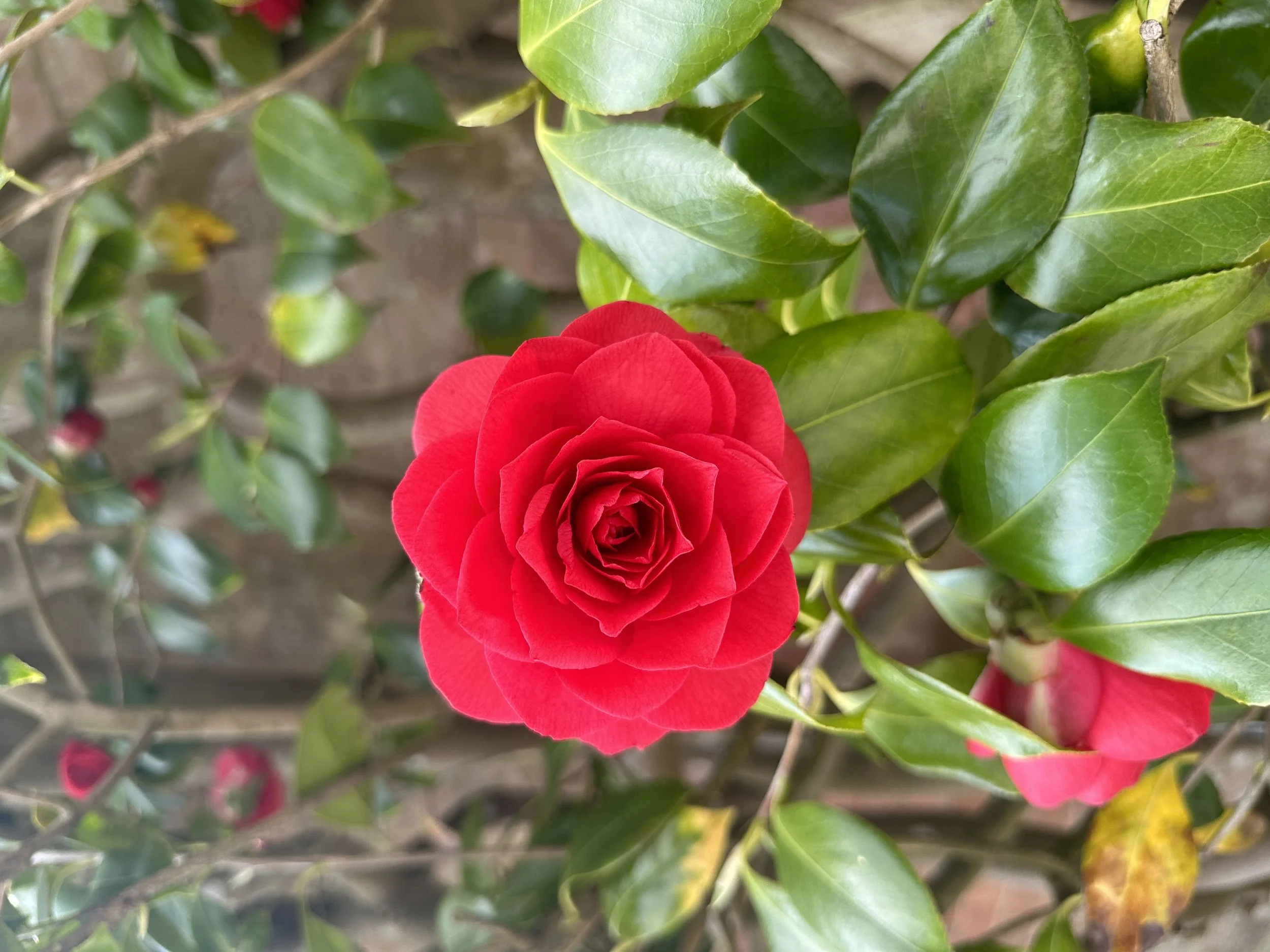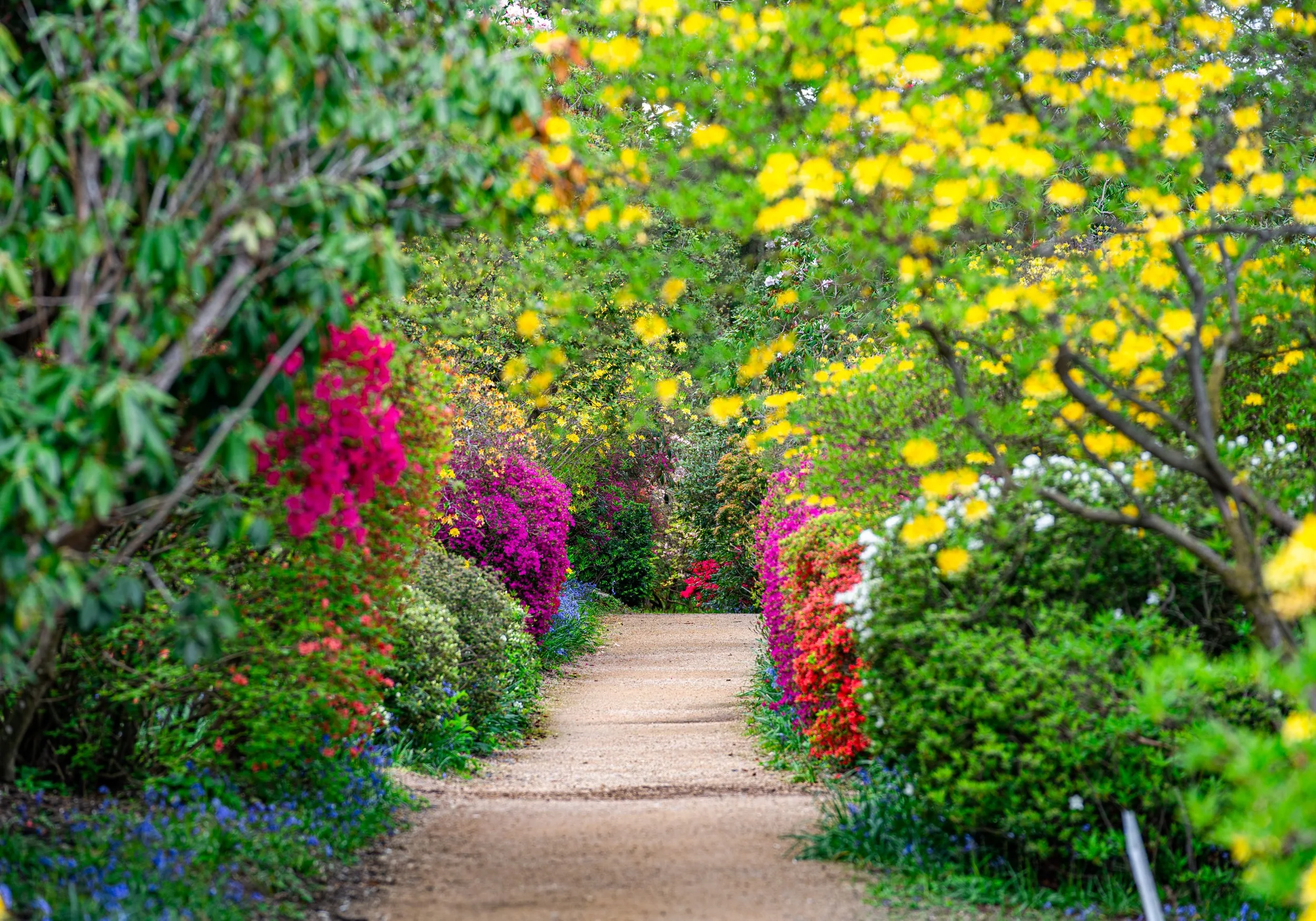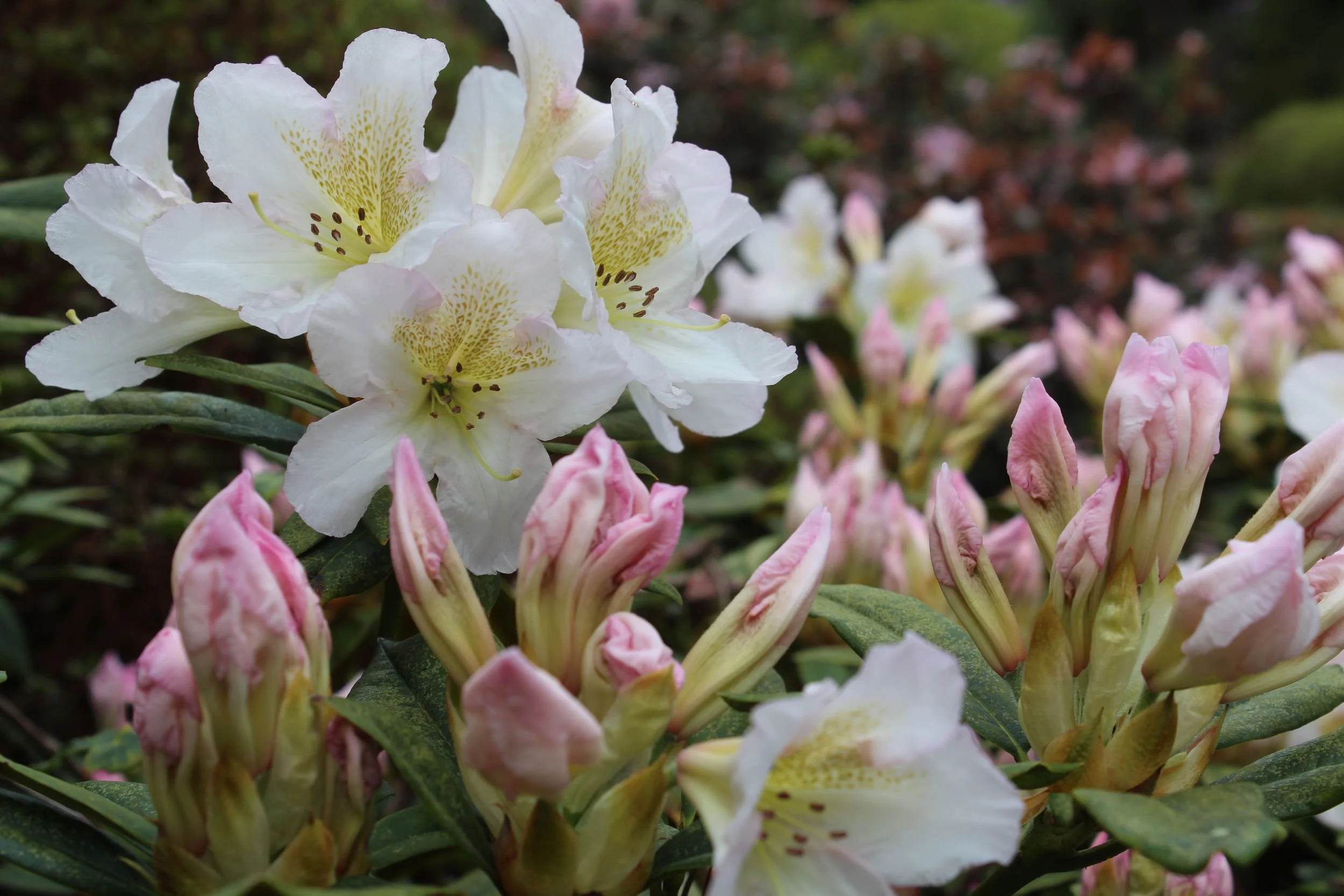SPRING HIGHLIGHTS
From March through to June, visitors are invited to explore our Grade I Listed gardens and discover the beauty of spring, alive with a riot of colour.
Visitors are invited to explore our Grade I Listed gardens and discover the beauty of spring, alive with a riot of colour.
It is the time of year for which our woodland gardens are most famous, attracting garden lovers worldwide. The vivid hues of rhododendrons, camellias, and magnolias overhang pathways fringed with bluebells, creating tunnels of colour.
Built over two hundred years ago, Leonardslee Lakes & Gardens is a unique haven in Sussex. Our gardens burst with colour and character throughout the year, especially during spring, boasting one of the largest and most impressive collections of rhododendrons in the United Kingdom.
Flowering times may vary due to the weather.
DAFFODILS
Best time to see: Late February – April
As the days get longer, and the weather starts to get warmer, you’ll find your way to the daffodil fields of Leonardslee. Set high in the Weald, just ten minutes away from the centre of Horsham, Leonardslee offers a truly magnificent patch of country woodland tranquillity.
The magic of thousands of daffodils will take centre stage under the blue skies of Leonardslee Lakes & Gardens; proving to be one of the best places to see early spring daffodils in bloom.
A carpet of golden daffodils covers the slopes of Leonardslee from early March. The magnificent yellow blooms of various types of Narcissus represent the start of colour to come in the gardens, a culmination of all that’s good and hopeful about spring at its most glorious.
Daffodil Lawn offers a beautiful display during March - April and around the lakeside banks are also carpeted in dazzling yellow and white hues. With new specimens flowering for the first time in 2022, being planted in the hundreds by our gardening team in the autumn of 2021. Our newly planted Imperial Fritillaries below the Clocktower Kitchen and around Leonardslee House will stop visitors in their tracks with their colourful, statuesque beauty. Our redesigned raised beds at the visitor entrance are also full of a revolving door of different bulbs so make sure you have a good look at them as you arrive too.
One of the most unusual introductions will be the Imperial Fritillaries below the Café steps. From the orange and yellow flowered Fritillaria imperialis ‘Aurora’ and ‘Lutea’ to the purple and white of Fritillaria persica and persica ‘Alba’ these plants are sure to create a big talking point in April. There will also be thousands of white ‘Thalia’ daffodils near Mossy Ghyll to enjoy.
BLUEBELLS
Best time to see: Late March
The wild beauty of Bluebell Bank will take your breath away as an enchanting carpet of blue and purple stretches across the glade. Stirring the imagination as if you are walking through a fairytale. At this time of year, there is something truly magical about the bluebells that have embraced the gardens. As the lush carpet of vibrant blue and purple is spread across the glade it creates an enchanting experience for all who visit. British bluebells hold a special place in the hearts of visitors and have long been a symbol of the arrival of warmer days.
The magic of Bluebell Bank can be experienced from mid-April when thousands of these beautiful bluebells can be found carpeting the forest floor beneath the trees. With the bluebells’ soft scent floating in the air and signs of the spring gardens awakening is the perfect time.
Across the lakes and a short walk up the valley, you’ll be in the much-loved and newly reopened Top Garden, awash with bluebells carpeting the forest floor beneath the trees.
Things you might not know about Bluebells:
The scientific name is a Hyacinthiodes no-scrpita commonly known as a bluebell or English Bluebell.
Known as the ‘fairy flower’, bluebells also have a rare ‘albino’ flower as it lacks the blue pigment.
Bluebells are known as slow growers, taking at least five years for a seed to develop into a bulb.
There is more to bluebells such as Bluebells have the symbolism of humility, constancy, gratitude, and everlasting love. Through the gardens, you may come across the woodland wildlife such as, bees and butterflies feeding on the nectar of the bluebell. Bees can be seen ‘stealing’ the nectar by biting a hole in the bottom of the flower and reaching for the nectar without the need to pollinate the flowers.
CAMELLIA WALK & CAMELLIA GROVE
Best time to see: Early March to June
In early spring, make your way to Camellia Walk Planted by Sir Edmund Loder, visitors can view outstanding displays that are over 100 years old, the oldest camellias in the gardens.
Camellia Grove, found down at the southwest corner of Waterfall Pond should also be in fine fettle in early May. Designed and planted by Sir Giles Loder in 1957, you can spend your time meandering and ambling through the undulating paths here as you admire the range of japonica Camellias on show. Some favourites include the perfectly sculpted blooms of ‘Hana Fuki’ or the frosted pink and white flowers of ‘Duchess De Caze’ which look almost good enough to eat. Incidentally, Sir Giles was a keen flower exhibitor, winning numerous RHS medals for his displays from the Leonardslee Lakes & Garden.
To the north of Camellia Grove lie the Bluebell Banks. Aptly named, these slopes on the west side of the lakes are covered in floral rivers of Hyacinthoides non-scripta, or Bluebells to you and me, in May. Delicately scented and a true sign of spring, bluebells are also a key indicator species for ancient woodland areas like Leonardslee. If you’re lucky you might even spot the odd rare white or pink specimen!
Here you can find Camellia ‘Lady McCulloch'; an exciting variety as it flowers in multiple colours all on the same plant – ranging from white with a red stripe to pure white, deep red and bright pink.
Within the valley, you can discover Camellia Grove where there are several hundred varieties of camellia, most of which are cultivars of Camellia japonica, which originates from Japan. This area was first planted in 1957-1958.
OUR FAMOUS RHODODENDRONS
Best time to see: Mid-April - Beginning June
There are estimated to be over 1000 within the woody Rhododendrons family (Ericaceae), some rhododendrons are known as evergreen and others deciduous. Rhododendrons tend to have small to large thick leather like leaves that are always paddle shaped. With the blooms having scale –like leaves surrounding the blooms this can resemble an artichoke. They have fewer stout stems with the flowers often being grouped together in large clusters, called trusses. With vivacious colour and scent. Here at Leonardslee, over the years, we’ve cultivated, raised and been made famous for our Rhododendrons
Key highlights not to miss include the Memorial Table and The Dell, offering breathtaking views of the valley and gardens. Rare hybrids include Rhododendron 'Vulcan', with large, deep red flowers and dark green foliage, and Rhododendron. 'Loderi King George', boasting fragrant, pale pink flowers in abundance.
Leonardslee proudly holds National Plant Collection status, featuring 42 distinct hybrids, with 32 under threat in cultivation and 17 exclusive to our gardens. The dedication to Sir Edmund Loder’s vision is evident in this extensive collection.
2023 Award Winners
RHS Wisley Spring Show
Rhododendron ‘Muriel’, Class 35 - 1st Prize.
Rhododendron argipeplum, Class 29 - 1st Prize.
Rhododendron schlippenbachii - 1st Prize.
Plant Heritage Threatened Plant of the Year
Rhododendron ‘The Dowager’ - People’s Choice Award
Plant Heritage Threatened Plant of the Year
Rhododendron ‘The Dowager’ - People’s Choice Award
Raised by Lady Loder from an unusual cross between Rh. arboreum and Rh. ‘Muriel’ (also a Leonardslee hybrid), it was also named after her. This is our only specimen of this endangered plant.
Flowering in early spring, the tips of the shoots are topped by rounded tight trusses of pale orchid-pink bloos, whiter at the edges and with some speckling.Don't miss this opportunity to celebrate nature's masterpiece in full bloom.
In the pursuit of preserving and sharing the beauty of the Rhododendron Loderi collection, we have taken our efforts beyond our own gardens. Our micro propagation initiatives have enabled us to share our prized plants with prestigious institutions, including the Duchy College. In December 2022, we proudly sent off a selection of our plants to be included in their historical collection of international importance, representing a small but significant contribution to the world of horticulture. The RHS RCM Group's gift of rhododendrons, camellias, and magnolias to King Charles adds a royal touch, featuring plants intricately linked with Leonardslee: Rh. 'Loderi King George' and Rh. 'Loderi Sir Joseph Hooker'.

